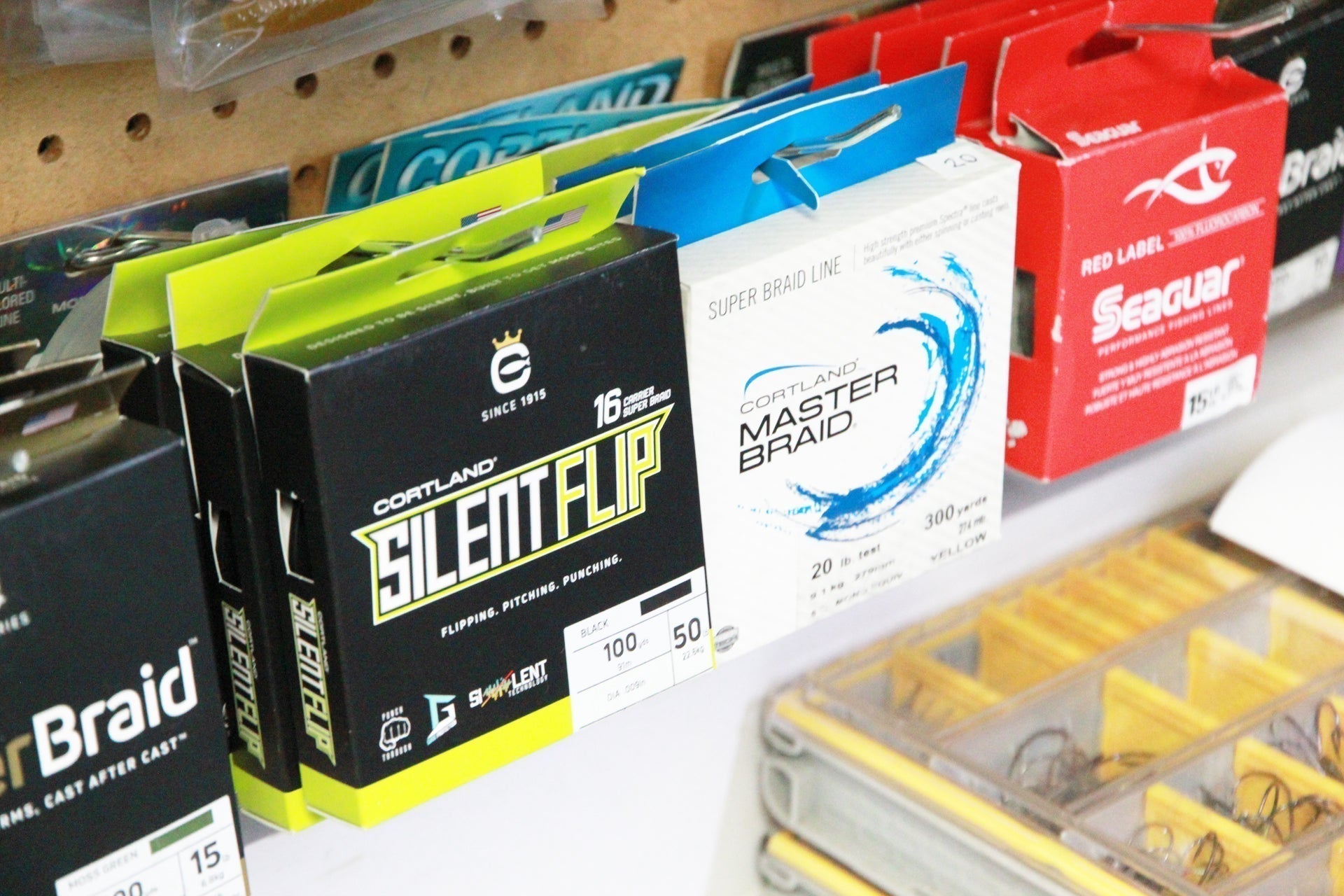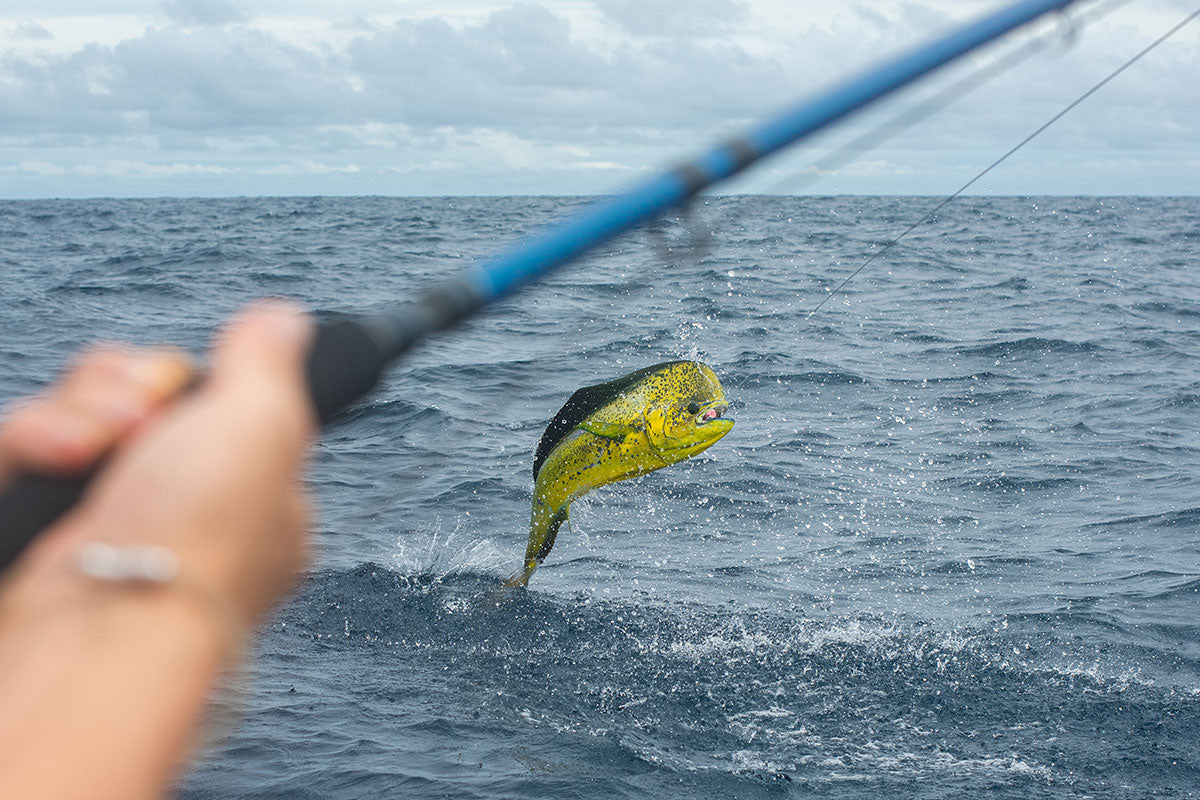Article Written by Remick Smothers. Article Read Time: 5 Minutes
Did you ever wake up as a kid and tell your parents you dreamed about living in Williamsburg, Virginia one day?
Yeah - me neither.
Growing up within the state-less confines of Washington, DC - Williamsburg was really known for only a couple of things in my youth. Colonial reenactments and Busch Gardens. I always figured I’d end up in the Carolinas or Florida or even Texas one day. A place where I could pole and pursue flats species in close proximity with a good boat dog and set down roots with my wife. So when we made the move from Salt Lake City to my wife’s hometown of Williamsburg (aka America’s Colonial Capitol) 3.5 years ago, I really didn’t know what to think or even where to start when it came to fly fishing this entirely new region and zone.
I knew there were flats…and a river…and lakes…and a bay…and an ocean…and so, so much to learn. But when you peel back the layers of the onion in regards to the commonwealth of Virginia as a whole, maybe we should be talking about this part of the state just a little more…at least in angling circles.

Photos by @chasingtidescollective
Upon settling in to Williamsburg, I was blown away but not only the sheer volume of water in Virginia’s Middle Peninsula but also by the incredible biodiversity that exists within it. Since June of 2021 I’ve managed to boat everything from 54” bull reds and blue cats to trophy stripers, speckled trout, and both largemouth and smallmouth bass…and believe it or not 19” crappie…I’ve even targeted a bunch of odd ball species like flathead catfish, alligator gar, and bowfin to much lesser success. Did I mention most of these catches were within 30 minutes of my front door? I wasn’t kidding when I said there was a lot of water to cover…but let’s run through a little exercise.
Where I am currently situated in Williamsburg, the tidal section of the James River is only about a 8 minute drive from my house. On the way to the ramp, there is a trophy bass lake with green fish over 10lbs and crappie over 20”. If I decide I don’t want to fish super close to home, I can jet 30 minutes down the highway to pristine flats and creek systems that boast healthy populations of redfish and speckled trout…or I can drive an hour up the road and get into some pretty special smallmouth and flathead water…or venture a scooch further up the highway and enter the realm of trout and musky water. Within 3 hours of my front door I can be fishing blue water for pelagics, take my pick of several premier warm water fisheries, trek to the mountains for trout, smallmouth, and musky, or simply stay home and have a steady pick at everything except trout and musky. That’s a pretty neat situation.
With the recent acquisition of a Boulder Boat Works River Skiff (an upgrade from my 1988 Gheenoe) - my options to fish locally have become a tad overwhelming (in a good way). After three years here, I’ve sort-of-kind-of know what I’m doing now and have learned when and where to take my best shots for success.
Virginia is a true 365 fishery but you have to know when it’s peak season for one specie and curtains for another. I’ve spent wayyyyyy too much time fishing to fish that probably weren’t there and while you can’t roll back the clock to get those minutes back - I did learn that I should probably be fishing different places at different times of year (duh).
Hopefully this breakdown of our summer fishery, while not entirely inclusive because I haven’t done EVERYTHING, can help shed some light on the opportunities that abound in our country’s original Commonwealth.
From mid-June to September, summer in Virginia’s Middle Peninsula can be described in one word: HOT. But if you’re willing to grind it out in the heat, or wake up early or fish late like sensible people, this is one of the best times of year to take advantage of Virginia’s incredible all-around fishing. This time of year, my attention is firmly focused on the flats systems of the lower Chesapeake Bay.

Photo by @chasingtidescollective
Early morning topwater for reds and speckled trout give way to epic sight fishing for schools of reds on the flats once the sun comes up. My typical flats day starts at dawn on a falling tide. I like this scenario because it allows you to look for reds pushing wakes or blind cast topwater for trout in the same zone. As the tide falls and the sun gets high, I will start poling shorelines and work my way into ponds (tides allowing) for some proper sight fishing action to laid up redfish. If you are lucky, on your way to a prospective pond you’ll encounter a school of reds known as a “drum wave”. The drum wave is exactly what is sounds like - a giant school of redfish, typically in the 24-36” class, that is so large that it literally pushes a wave (similar to a boat wake) as they move across the flat. When you’re on the grass flats there is no better sight and it usually leads to some very exciting and fast fishing.
The key to fishing these schools is to try and be as subtle as possible. Do it right and you might catch a half-dozen fish out of the school - do it wrong and you’re probably one and done. Either scenario is a good one but in my experience, giving the fish time to resettle and fishing the edges of the school are the best way to maximize this bite. For flies, I like to have standard assortment of flats food - shrimp, crabs, mud minnows, peanut bunker, and finger mullet patterns. While everyone loves a laid up shot at a redfish, I’ve often found my fish to sneak up on me while I’m fishing grass flats. These encounters result in a lot of “short shots” - casts 10-20’ or less - that require me to load the rod quickly and get the fly down and in front of the fish before they see me. The Cortland Tropical Redfish line is a great all-around line for this type of fishing because it allows you to load the rod quickly for the short game while also allowing you to fish bigger flies or bomb topwater bugs in a pinch.

If you’ve got a bigger boat than mine, Virginia’s big game fly fishing is the premier option in town as schools of cobia and bull reds enter the bay in force around Memorial Day and summer here until late September, early October. These leviathans are true 11-12wt fish and while floating lines can get the job done in some situations - a heavy shooting head that will get your flies down and in front of the fish are recommended. Big baitfish patterns are the ticket here - Chocklett’s Game Changer, Beast Fleyes, and bulky deceivers type patterns that push water are your best all around patterns here as while cobia can sometimes be dialed in on eels - there is a lot of overlap in diets between species.
If the salt isn’t for you, smallmouth, flatheads, and carp provide freshwater targets for folks more removed from the coastal action…and if you’re one of those weirdos (like me), you can target bowfin, blue cats, or alligator gar in some of the swampier backwaters and creeks of the Middle Peninsula…just bring bug spray. For the more glamorous freshwater species, I like to sight fish whenever possible. Whether that’s leading a big bronze fish with a dead-drifted popper off the bank or looking for tailing carp - the rivers offer a unique (and refreshing) brand of excitement for anglers looking to fish from the bank or float.
For the less glamorous species (that pull very hard) and live in undeniably uglier dwellings, I like throwing an 8wt with a floating line and standard 9’ leader tapered down to 30#. These fish are not picky. Just make your presentation weedless and not too heavy and you’re in the right ball park. Weed guards and lightly weighted flies are key for getting through the summer vegetation in most tidal creeks and trust me - that grass and mud are both shall we say - gross. I like to target points, pockets, and the openings of creek mouths where these fish will take advantage of their low oxygen environment and put on the feedbag.
While it is going to be hot for another few months I’m pretty sure I will persevere. Us Middle Peninsula dwellers often dream of that time of year when the quality of summer fishing intersects with dreamy fall weather - but punting on the next few months would be a shame. Summer in Virginia is a special time. I hope to see you out there.
About The Author
Remick Smothers has worn a few hats in the outdoor industry but has always been known as a “fishy” dude wherever he worked. Now happily residing in Williamsburg, Virginia with his wife, Sarah, and toddler, Lela, you can find him on the waters of the Mid-Atlantic with his faithful Chesapeake Bay Retriever, Chili, chasing just about anything and everything that swims. He likes to cook too. You can follow his adventures @flytimesdc on Instagram.


